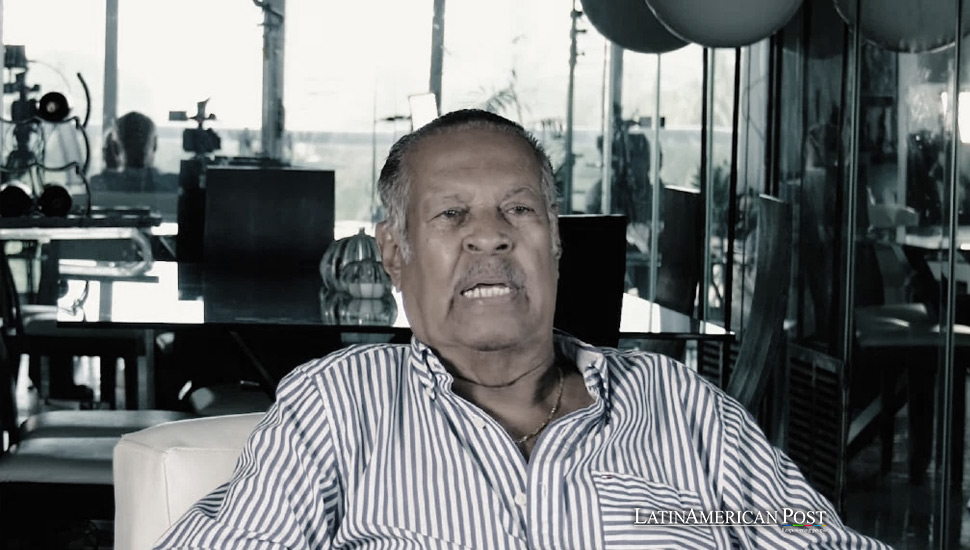A Life in Cinema: Cuban Sergio Giral’s Legacy

Sergio Giral, a pioneering Cuban filmmaker who explored the role of African roots in Cuban culture, died at the age of 87 in Miami. His work has left an indelible mark on Latin American cinema, inspiring generations of filmmakers.
Sergio Giral, a towering figure in Cuban cinema, passed away on Tuesday in Miami at 87. Born in Havana in 1937, Giral helmed 16 films, including nine documentaries, leaving behind a rich legacy celebrating Cuban culture and identity.
Giral’s early life was marked by a move to the United States for his primary and secondary education. Upon returning to Cuba, he began studying Agronomy, a path he soon abandoned to pursue his passion for cinema. His formative years in the US likely influenced his worldview and artistic sensibility, shaping his perspectives on Cuba after his return.
Giral’s documentary work stands out for its exploration of Cuba’s diverse cultural threads. His 1962 short film “Heno y ensilaje” offers a glimpse into the agricultural practices of the time, while “Anatomía de un accidente” (1970) takes a critical look at a tragic event.
In “Qué bueno canta usted” (1973), Giral turns his lens to the vibrant world of Cuban music, capturing the essence of this integral aspect of the island’s culture. This film likely holds particular historical significance, as it reflects a moment in Cuban society where celebrating musical heritage was an act of cultural preservation and national identity formation.
Exploring Afro-Cuban Roots
Giral’s deep interest in the role of African roots in Cuban culture is evident in several of his films. “El otro Francisco” (1974) tells the story of a Black Cuban peasant who becomes a revolutionary, while “Plácido” (1986) delves into the life of a humble Afro-Cuban man navigating the challenges of everyday life.
“María Antonia” (1990), based on the play by Eugenio Hernández Espinosa, remains one of the most successful films in Cuban history. It tells the story of a Black woman who struggles against racial prejudice and social injustice. Giral’s dedication to highlighting these narratives underscores the enduring power of cinema to address issues of inequality and amplify marginalized voices.
Giral’s work has profoundly impacted filmmakers across Latin America and beyond. His commitment to social justice and his exploration of Afro-Cuban identity have inspired generations of artists to use cinema for social change.
“Giral was a precursor in that sense, with his awareness and the works we see today addressing these themes,” commented Cuban-born film critic Alejandro Ríos to Martí Noticias.
Giral’s Impact on Latin American Cinema
Giral’s influence can be seen in the work of many contemporary filmmakers, particularly those working in the documentary genre. His commitment to social realism and his focus on marginalized communities have resonated with filmmakers grappling with similar social complexities across the region.
In Brazil, for example, filmmakers like Eduardo Coutinho and Paulo Gil Soares have used documentary films to explore the lives of ordinary people and to challenge social inequalities. Similarly, in Argentina, filmmakers like Fernando Solanas and Lucrecia Martel have used their films to address issues of social justice and political repression. Further afield, in Chile, documentarians like Patricio Guzmán have tackled the legacy of dictatorship, their work resonating with Giral’s focus on examining social and historical complexities.
Giral’s legacy is not limited to Cuba or Latin America. His work has inspired filmmakers worldwide who are committed to using cinema as a tool for social change. His films will continue to be studied and admired for generations to come.
Also read: Chilean Maite Alberdi’s ‘La Memoria Infinita’: A Beacon for Latin American Cinema at the Oscars
Sergio Giral was a visionary filmmaker who used his art to explore Cuban identity’s complexities and advocate for social justice. A member of the founding generation of the Instituto Cubano de Arte e Industria Cinematográficos (Icaic), his work reflects the revolutionary ideals of the time while critically addressing ongoing struggles. His work has left an indelible mark on Latin American cinema and will continue inspiring filmmakers for years.





